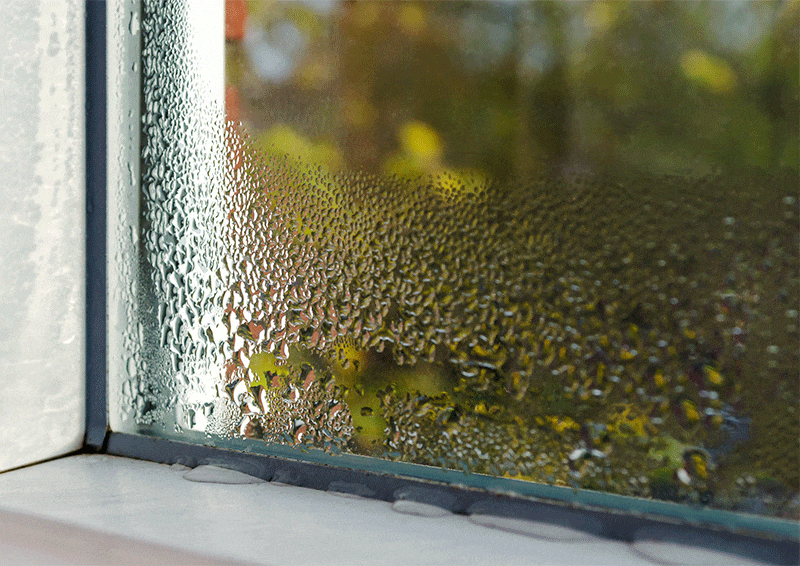Are you tired of feeling stuffy and congested in your own home? Do you find yourself constantly sneezing or experiencing allergy symptoms indoors? If so, you’re not alone. Many people don’t realize that the air inside their homes can be even more polluted than the air outside. But don’t worry, there are indoor air quality solutions that can help improve the air you breathe and create a healthier environment for you and your family.
Indoor air quality solutions are a hot topic right now, and for good reason. With the rise of sick building syndrome and the increasing number of people spending their time indoors, it’s more important than ever to pay attention to the air quality in your home. Sick building syndrome refers to a set of symptoms that are caused by spending time in a building with poor air quality, such as headaches, dizziness, and respiratory issues.
Thankfully, there are a variety of solutions available to combat these issues and create a healthier indoor environment. In this blog, we will explore some of the most effective indoor air quality solutions, from air purifiers and ventilation systems to natural remedies and green building materials. So if you’re ready to take control of your indoor air quality and create a healthier home, keep reading to learn more about these innovative solutions.
Indoor Air Quality Solutions and Sleep
Indoor Air Quality (IAQ) refers to the quality of air within buildings and structures, particularly as it relates to the health and comfort of occupants. IAQ solutions are measures taken to improve indoor air quality and reduce exposure to indoor pollutants. These solutions are crucial because poor IAQ can have a significant impact on our health and well-being.
IAQ and Its Components

IAQ encompasses various factors that contribute to the overall quality of the air we breathe indoors. These factors include temperature, humidity, ventilation, and the presence of pollutants such as dust, allergens, volatile organic compounds (VOCs), and other airborne contaminants.
Common Indoor Pollutants
Dust, allergens, and VOCs are among the most common indoor pollutants. Dust particles can contain a range of allergens, such as pollen, pet dander, and dust mites, which can trigger allergies and respiratory issues. VOCs are gases emitted by certain materials and products, such as paints, cleaning agents, and furnishings. Prolonged exposure to VOCs can lead to various health problems, including headaches, dizziness, and irritation of the eyes, nose, and throat.
The Impact of Poor IAQ on Health and Sleep
Poor IAQ can have a profound impact on our health, particularly when it comes to sleep. Exposure to indoor pollutants can lead to respiratory problems, allergies, asthma, and other respiratory conditions, all of which can disrupt sleep. Additionally, poor IAQ can contribute to the development of sleep disorders, such as insomnia and sleep apnea.
The Link Between IAQ and Sleep
There is a clear link between indoor air quality and sleep. When the air we breathe is contaminated with allergens, dust, and other pollutants, it can trigger respiratory issues and discomfort that disrupt sleep. Additionally, certain pollutants, such as VOCs, can have neurotoxic effects, affecting the brain’s ability to regulate sleep patterns. Therefore, ensuring good IAQ is crucial for promoting healthy and restful sleep.
The Importance of Quality Sleep for Overall Well-being

Quality sleep is essential for our overall well-being. During sleep, our bodies repair and rejuvenate, and our minds consolidate memories and process emotions. Lack of quality sleep can lead to a range of health issues, including weakened immune function, impaired cognitive abilities, mood disorders, and increased risk of chronic conditions like diabetes and cardiovascular disease. Therefore, prioritizing quality sleep is crucial for maintaining optimal physical and mental health.
Blade Air’s Innovative IAQ Solutions for Sleep
At Blade Air, we understand the importance of clean, healthy air for quality sleep. That’s why we offer innovative air purification and IAQ solutions specifically designed to enhance sleep environments. Our range of solutions includes whole building purification systems, portable air purifiers, and odor control technologies.
Our whole building purification systems utilize cutting-edge UV-C and HEPA filtration technologies to eliminate airborne contaminants, allergens, and VOCs, ensuring that the air you breathe while sleeping is clean and fresh. Our portable air purifiers provide a compact and efficient solution for improving IAQ in individual rooms, allowing you to create a clean and healthy sleep environment wherever you go.
Odor Control Solutions
Additionally, our odor control technologies, such as carbon filters, effectively remove unpleasant odors that can disrupt sleep and provide a soothing and refreshing atmosphere. Finally, our Blade Air Pro Series combines electromagnetic technology with advanced filtration to provide unmatched air purification performance, ensuring the highest quality sleep experience.
With Blade Air’s innovative IAQ solutions, you can rest assured knowing that you are breathing clean, healthy air while you sleep. Say goodbye to poor IAQ and its negative effects on sleep and embrace the transformative power of Blade Air for a revitalizing and restful night’s sleep.
Related Reading
The Connection Between IAQ and Sleep
Restful sleep is crucial for maintaining good health and overall well-being. Poor indoor air quality can have a significant impact on sleep patterns, leading to disruptions and even sleep disorders. In this section, we will explore the relationship between air quality and sleep, and discuss scientific studies supporting this connection.

How can pollutants disrupt sleep patterns?
Indoor air pollutants such as volatile organic compounds (VOCs), allergens, and particulate matter can disrupt sleep patterns in several ways. These pollutants can irritate the respiratory system and trigger allergic reactions, causing discomfort and breathing difficulties during sleep. This can result in frequent awakenings, reduced sleep efficiency, and a less restful sleep overall.
Furthermore, certain pollutants like nitrogen dioxide (NO2) and ozone (O3) can affect the central nervous system and lead to changes in sleep architecture. Studies have shown that exposure to high levels of these pollutants can increase the time it takes to fall asleep, decrease the duration of deep sleep, and increase the frequency of awakenings during the night.
Tips for Improving IAQ for Better Sleep
One of the most effective ways to improve indoor air quality (IAQ) for better sleep is by ensuring proper ventilation and air circulation in your home. Good ventilation helps to remove stagnant air and introduce fresh air, reducing the concentration of indoor pollutants. There are several strategies you can employ to achieve this:
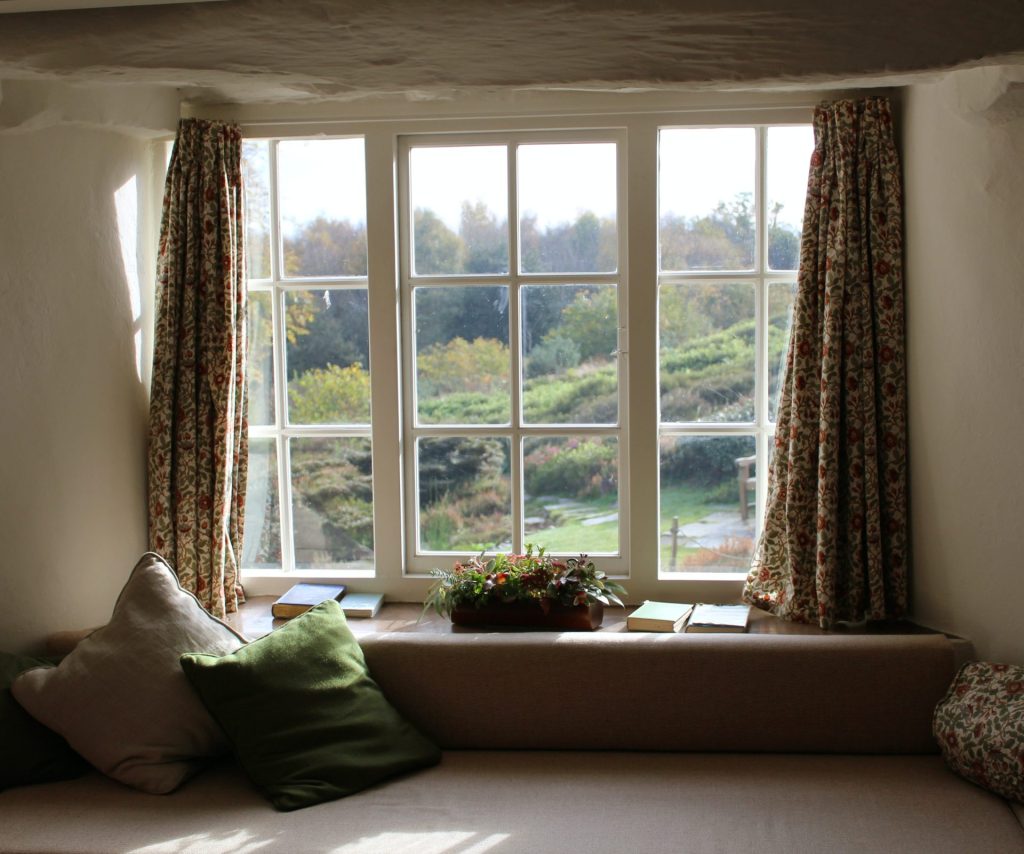
1. Open windows and doors
Opening windows and doors allows for the exchange of indoor and outdoor air, helping to reduce indoor pollutants and increase oxygen levels. This is especially beneficial during times when outdoor air quality is good.
2. Use exhaust fans
Exhaust fans in areas such as the kitchen and bathroom help to remove odors, moisture, and pollutants generated during cooking or bathing. Make sure to use them regularly and keep them clean to ensure optimal performance.
3. Invest in a mechanical ventilation system
Mechanical ventilation systems, such as heat recovery ventilators (HRVs) or energy recovery ventilators (ERVs), provide a controlled and continuous exchange of indoor and outdoor air. These systems can help to filter out pollutants and maintain a steady supply of fresh air throughout your home.
Regular cleaning and dust control strategies:

Dust and allergens can have a significant impact on air quality and sleep. Regular cleaning and dust control strategies can help alleviate these issues:
1. Dust surfaces regularly
Dusting surfaces such as furniture, shelves, and electronic devices can help reduce the accumulation of dust and allergens. Use a damp cloth or microfiber cloth to trap particles rather than spreading them into the air.
2. Vacuum with a HEPA filter
Vacuuming with a high-efficiency particulate air (HEPA) filter can effectively capture dust, pet dander, and other allergens, preventing them from becoming airborne. Make sure to vacuum carpets, rugs, and upholstery regularly, paying extra attention to areas where dust tends to accumulate.
3. Wash bedding regularly
Bedding, including sheets, pillowcases, and blankets, can harbor dust mites and allergens. Wash these items in hot water regularly to eliminate allergens and maintain a clean sleeping environment.
Using air purifiers and filtration systems:
Air purifiers and filtration systems are valuable tools in improving IAQ and promoting better sleep. They work by capturing and removing airborne pollutants, including dust, pet dander, pollen, and volatile organic compounds (VOCs). Here’s what you need to know:
1. Choose the right type of air purifier
Look for an air purifier that uses a HEPA filter. HEPA filters are highly efficient at capturing particles as small as 0.3 microns, ensuring cleaner air in your home. Additionally, consider an air purifier with an activated carbon filter to help remove VOCs and odors.
2. Place air purifiers strategically
To maximize their effectiveness, place air purifiers in areas where you spend the most time, such as the bedroom or living room. Ensure proper airflow around the unit and avoid obstructing the intake or exhaust vents.
Choosing sleep-friendly houseplants:

Houseplants not only add beauty to your home but can also help improve IAQ and promote better sleep. Certain plants have the ability to remove toxins and release oxygen, creating a more soothing and restful environment. Here are some sleep-friendly houseplants to consider:
1. Snake Plant (Sansevieria)
Snake plants are known for their ability to absorb toxins like formaldehyde and benzene, improving indoor air quality. They release oxygen at night, making them an excellent addition to the bedroom for better sleep.
2. Peace Lily (Spathiphyllum)
Peace lilies are effective at removing common indoor pollutants such as formaldehyde, benzene, and trichloroethylene. They also add a touch of natural beauty to any room.
3. Aloe Vera
Aloe vera is not only known for its healing properties but also for its ability to improve air quality by removing formaldehyde and benzene. Place an aloe vera plant in your bedroom to enhance the quality of your sleep.
Limiting the use of certain products that emit VOCs:
Volatile organic compounds (VOCs) are chemicals emitted from various household products, including cleaning supplies, paints, furniture, and carpets. These compounds can worsen indoor air quality and affect sleep. Here are some steps to reduce VOC exposure:
1. Choose low-VOC products
When purchasing paints, cleaning supplies, or other products for your home, opt for those labeled as low VOC or VOC-free. These products have lower levels of volatile chemicals, reducing their impact on indoor air quality.
2. Properly ventilate when using products
Whenever you’re using products that emit VOCs, such as paint or cleaning solutions, make sure to open windows and doors to allow for adequate ventilation. This helps to reduce the concentration of VOCs in the air.
By following these tips, you can significantly improve indoor air quality and create a sleep-friendly environment in your home. Proper ventilation, regular cleaning, the use of air purifiers, sleep-friendly houseplants, and limiting the use of VOC-emitting products are all key strategies in achieving better IAQ for better sleep.
Bedroom Design and IAQ
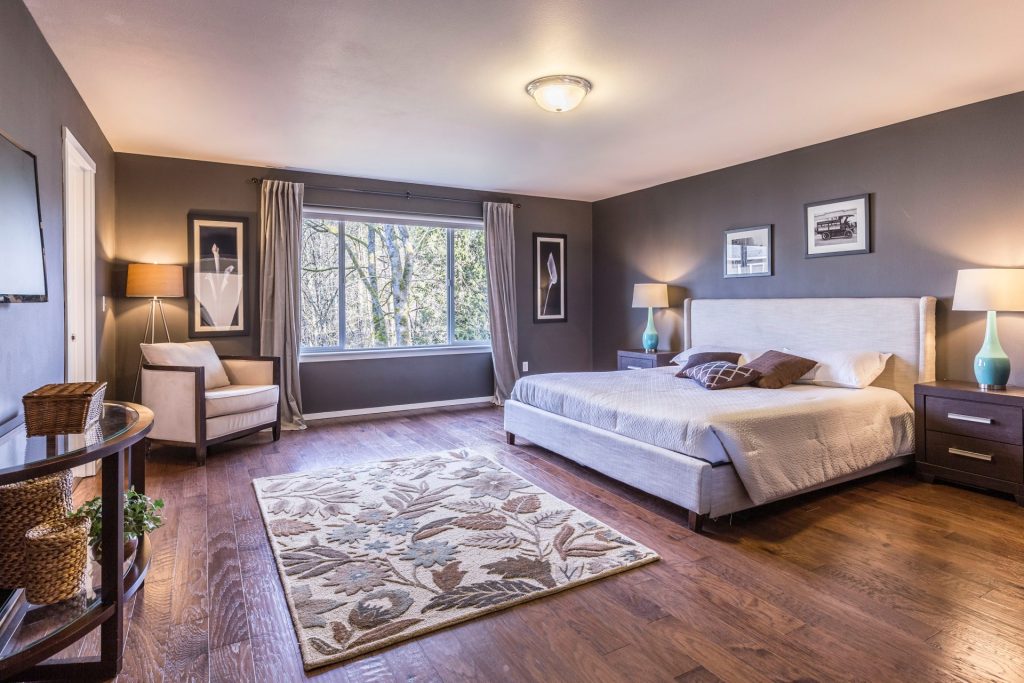
The layout of your bedroom can have a significant impact on the air circulation and overall indoor air quality. To optimize air circulation in your bedroom, consider the following layout tips:
1. Position your bed away from walls
Placing your bed away from the walls allows air to circulate freely around it. This helps prevent the accumulation of dust, allergens, and stagnant air.
2. Clear the clutter
Keep your bedroom clutter-free to allow for better air circulation. Clutter can obstruct airflow and create pockets of stagnant air.
3. Use ceiling fans or portable fans
Fans help to promote air movement and improve circulation in your bedroom. They can also help distribute cool or warm air from your HVAC system more efficiently.
4. Open windows and doors
Whenever possible, open your windows and doors to allow fresh air to enter your bedroom. This helps to flush out indoor pollutants and improve the overall air quality.
5. Consider a cross-ventilation strategy
If your bedroom has windows on opposite walls, you can create a cross-ventilation strategy by opening both windows. This allows for a natural airflow that can help remove stale air and bring in fresh air from outside.
Furniture and Material Choices for Reduced Pollutant Retention
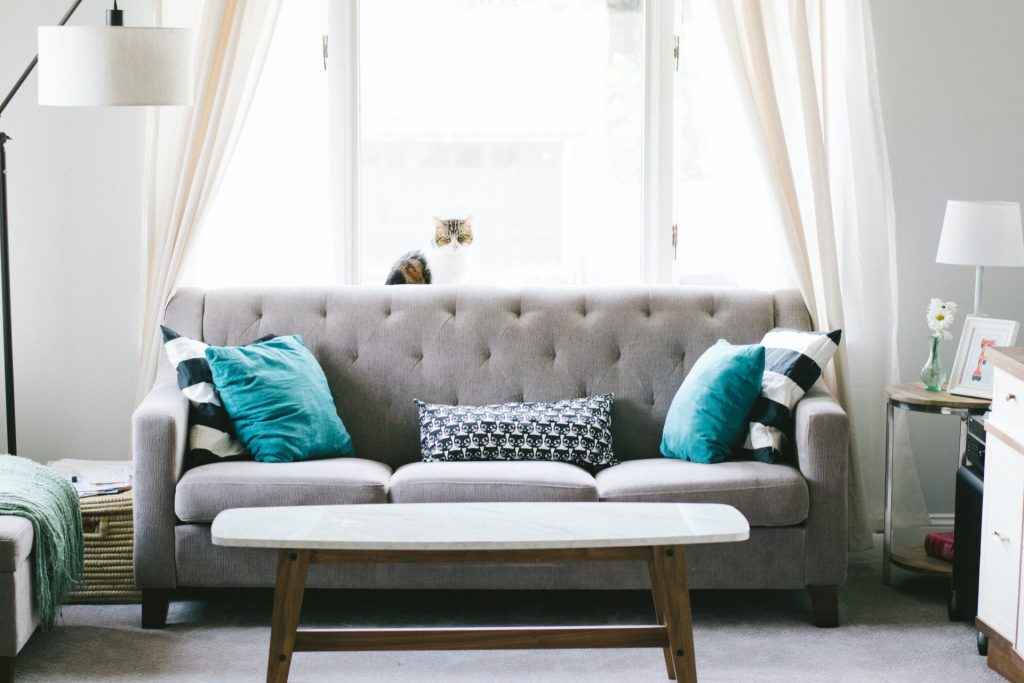
The furniture and materials you choose for your bedroom can greatly impact the retention of pollutants and indoor air quality. Here are some optimal choices to consider:
1. Eco-friendly furniture
Opt for furniture made from natural materials such as solid wood, bamboo, or metal. These materials are generally less likely to emit harmful volatile organic compounds (VOCs) compared to furniture made from synthetic materials.
2. Low-VOC paints and finishes
When painting your bedroom or refinishing furniture, choose low-VOC or zero-VOC paints and finishes. These products release fewer harmful chemicals into the air, reducing the risk of indoor air pollution.
3. Non-toxic flooring options
Avoid carpets and opt for hard flooring options such as hardwood, bamboo, or cork. Carpets can trap dust, allergens, and other pollutants, while hard flooring is easier to clean and maintain.
4. Natural bedding materials
Choose bedding made from natural materials such as organic cotton, linen, or bamboo. These materials are less likely to retain allergens and are generally more breathable, promoting better air circulation.
Importance of Bedding and Mattress Maintenance
Bedding and mattress maintenance plays a crucial role in maintaining good indoor air quality and reducing the buildup of pollutants. Here’s why it’s important:
1. Dust mites and allergens
Over time, bedding and mattresses can accumulate dust mites, allergens, and dead skin cells. Regular cleaning and maintenance help minimize the presence of these potential allergens in your bedroom.
2. Mold and mildew prevention
Damp bedding or mattresses can promote the growth of mold and mildew, which can negatively impact your indoor air quality and pose health risks. Proper maintenance, including regular airing and drying, helps prevent mold and mildew growth.
3. Odor control
Bedding and mattresses can absorb odors over time, resulting in an unpleasant smell in your bedroom. Regular cleaning and maintenance, such as vacuuming and sun exposure, can help control odors and keep your bedroom smelling fresh.
4. Longevity and comfort
Proper maintenance of bedding and mattresses can extend their lifespan and ensure optimal comfort. Regularly flipping and rotating mattresses, washing bedding on a regular basis, and spot-cleaning any stains can help maintain their quality and functionality.
By implementing an optimal bedroom layout, choosing furniture and materials with reduced pollutant retention, and maintaining bedding and mattresses, you can significantly improve your indoor air quality. These steps promote better air circulation, reduce the accumulation of pollutants, and contribute to a healthier and more comfortable bedroom environment.
Lifestyle Factors and IAQ Impact on Sleep
When it comes to indoor air quality, smoking and pets can have a significant impact. Both smoking and pets release pollutants into the air, which can have detrimental effects on our health.

Smoking
Smoking is a major contributor to poor indoor air quality. Cigarette smoke contains thousands of chemicals, including carbon monoxide, formaldehyde, and volatile organic compounds. These pollutants can linger in the air for long periods, leading to respiratory problems, allergies, and even more serious health issues such as heart disease and lung cancer. Secondhand smoke, in particular, can be harmful to children and non-smokers who are exposed to it.
Pets, while beloved members of the family, can also affect indoor air quality. Pet dander, which includes skin flakes, fur, and feathers, can trigger allergic reactions in some individuals. This can lead to symptoms such as sneezing, coughing, itchy eyes, and congestion. Additionally, pets can introduce dirt and outdoor pollutants into the home, further compromising indoor air quality.
Prevention and Mitigation
Managing these issues involves both prevention and mitigation. For smoking, the best solution is to quit altogether. If that’s not possible, smoking should be done outdoors or in designated smoking areas away from the home. Proper ventilation, such as using exhaust fans and opening windows, can help reduce the concentration of smoke indoors.
When it comes to pets, regular grooming and bathing can help minimize shedding and dander. Using air purifiers with HEPA filters can also help reduce airborne allergens. Vacuuming frequently with a vacuum cleaner equipped with a HEPA filter can remove pet hair and dander from carpets and furniture. Keeping pets out of the bedroom can also help create a cleaner sleeping environment.
Role of Humidity Levels in Promoting Comfort and Sleep
Humidity levels play a crucial role in promoting comfort and quality sleep. Both high humidity and low humidity can have negative effects on our well-being.
High humidity levels can make us feel sticky and uncomfortable. Excessive moisture in the air can also lead to the growth of mold and mildew, which can release spores and allergens into the air. This can cause respiratory problems, allergies, and worsen existing conditions such as asthma. In addition, high humidity can disrupt our sleep by making us feel hot and sweaty, leading to restless nights.
Body Irritation
On the other hand, low humidity levels can cause dryness and irritation of the skin, eyes, and respiratory system. It can also exacerbate conditions such as allergies, asthma, and sinusitis. Dry air can make it difficult to breathe and contribute to a dry throat and nasal passages, leading to snoring and disrupted sleep.
To maintain optimal humidity levels, it is recommended to keep indoor humidity between 30% and 50%. Using a hygrometer can help monitor humidity levels in the home. If humidity is too high, using dehumidifiers can help remove excess moisture from the air. If humidity is too low, humidifiers can add moisture to the air. It’s important to clean and maintain humidifiers and dehumidifiers regularly to prevent the growth of bacteria and mold.
Managing Allergens and Their Impact on Sleep Quality
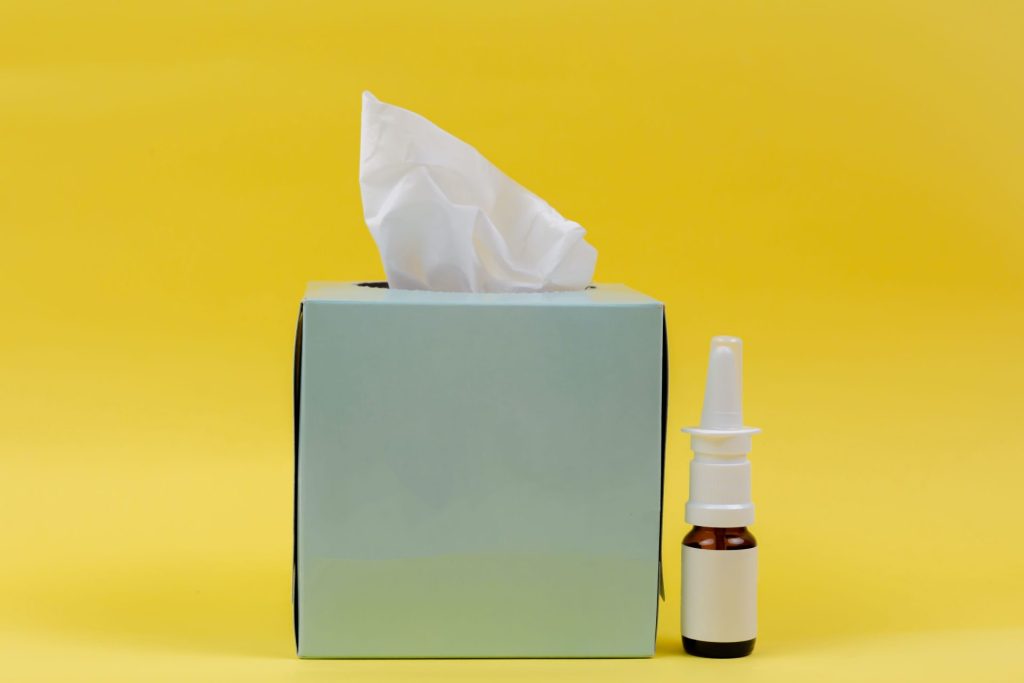
Allergens can have a significant impact on sleep quality, leading to discomfort and disrupted sleep. Dust mites, pollen, pet dander, and mold are common allergens found in indoor environments.
Dust Mites
Dust mites thrive in warm and humid environments and can be found in bedding, carpets, and upholstered furniture. Their feces and body parts can trigger allergies and asthma symptoms, leading to congestion, sneezing, and itchiness. To minimize exposure to dust mites, it is recommended to use allergen-proof mattress and pillow covers, wash bedding regularly in hot water, and vacuum carpets and upholstery regularly.
Pollen
Pollen, another common allergen, can enter the home through open windows and on clothing. It can cause allergic reactions, including itchy eyes, runny nose, and sneezing. To reduce pollen exposure, it is important to keep windows closed during high pollen seasons, use air purifiers with HEPA filters, and shower before going to bed to remove any pollen on the body or hair.
Pet Dander
Pet dander, as mentioned earlier, can trigger allergies and disrupt sleep. To manage pet allergens, it is important to keep pets out of the bedroom and regularly groom and bathe them. Using air purifiers with HEPA filters can also help remove airborne pet allergens.
Mold
Mold, another common allergen, thrives in damp environments and can be found in bathrooms, basements, and areas with water damage. Exposure to mold can lead to allergic reactions, respiratory problems, and worsen existing conditions such as asthma. To prevent mold growth, it is important to address any water leaks or moisture issues promptly. Proper ventilation, such as using exhaust fans and opening windows, can also help reduce humidity and prevent mold growth.
Related Reading
Creating a Sleep-Conducive Environment

When it comes to creating a sleep-conducive environment, incorporating relaxation techniques before sleep can be highly beneficial. We all know that winding down before bed is important, but it’s not just about turning off the screens and dimming the lights. By actively engaging in relaxation techniques, you can help your body and mind prepare for a restful night’s sleep.
One effective relaxation technique is deep breathing. Taking slow, deep breaths helps activate the parasympathetic nervous system, which promotes relaxation. It can be as simple as inhaling deeply through your nose for a count of four, holding your breath for a count of four, and exhaling through your mouth for a count of four. Repeat this cycle several times before bed, focusing on your breath and letting go of any tension or stress.
Another helpful technique is progressive muscle relaxation. This involves systematically tensing and then releasing each muscle group, starting from your toes and working your way up to your head. By consciously relaxing your muscles, you can release any physical tension that may be inhibiting your ability to fall asleep.
Maintaining an ideal room temperature for sleep
The temperature of your bedroom plays a significant role in the quality of your sleep. To create a sleep-conducive environment, it’s important to maintain an ideal room temperature. The National Sleep Foundation recommends setting your thermostat between 60 and 67 degrees Fahrenheit (15.6 and 19.4 degrees Celsius) for optimal sleep.
When your body is preparing for sleep, your core body temperature naturally drops. A cooler room temperature helps facilitate this process and promotes the release of melatonin, the hormone that regulates sleep. It also helps prevent overheating, which can lead to restlessness and disrupted sleep.
Using bedding and clothing that allows for temperature regulation is also important. Opt for breathable, moisture-wicking materials like cotton or bamboo, and consider investing in a mattress or pillow with cooling properties.
Darkening the room and minimizing noise disruptions
Creating a sleep-conducive environment involves ensuring your sleeping space is dark and quiet. Darkness and quietness signal to your body that it’s time to rest and can help improve the quality of your sleep.
To darken your room, use blackout curtains or blinds that effectively block out external light sources. This is especially important if you live in an area with street lights or have a bedroom that gets a lot of natural light. Alternatively, you can use an eye mask to create a dark environment.
Minimizing noise disruptions is equally important. Excessive noise can disrupt your sleep and prevent you from reaching deep, restorative sleep stages. Consider using earplugs or a white noise machine to drown out unwanted sounds. White noise machines emit a steady, soothing sound that masks background noises and helps promote a peaceful sleep environment.
The Importance of Regular IAQ Assessments and Monitoring Tools
Regular IAQ assessments and the use of monitoring tools are crucial for maintaining a healthy sleep environment. By regularly assessing indoor air quality (IAQ), individuals can identify potential issues and take necessary steps to address them. Monitoring tools provide real-time data on IAQ parameters, which can help in identifying trends and taking proactive measures to ensure clean and breathable air.

Seasonal Adjustments to IAQ Strategies
IAQ strategies should be adjusted seasonally to accommodate changing environmental conditions. Different seasons bring varying challenges to indoor air quality, such as increased allergens in the spring or dry indoor air in the winter. By adapting IAQ strategies based on the season, individuals can mitigate these challenges and maintain a comfortable sleep environment.
Seeking Professional Help When Needed
While regular assessments and monitoring tools are useful, there may be instances where professional help is needed to address IAQ concerns. Professionals in the field of indoor air quality solutions have the expertise and knowledge to assess, diagnose, and recommend appropriate measures for improving IAQ. Seeking professional help can provide peace of mind and ensure the implementation of effective solutions.
Regular IAQ assessments involve evaluating various factors that can affect indoor air quality, such as ventilation, humidity levels, and presence of pollutants. These assessments can be done by individuals themselves using DIY test kits or by hiring professionals specializing in IAQ assessments. By conducting regular assessments, individuals can identify potential problems, such as mold growth or high levels of particulate matter, and take appropriate measures to rectify them.
Monitoring Tools
Monitoring tools, such as indoor air quality monitors, provide real-time data on key IAQ parameters, including temperature, humidity, carbon dioxide levels, and volatile organic compounds (VOCs). These tools enable individuals to track IAQ trends and identify potential issues before they become severe. For example, if the CO2 levels in a bedroom are consistently high during sleep hours, it could indicate inadequate ventilation and the need for better airflow.
Seasonal adjustments to IAQ strategies are essential because different seasons bring different challenges to indoor air quality. For instance, during the spring, allergens like pollen are more prevalent, and individuals with allergies may need to increase ventilation or use air purifiers to remove these allergens. In the winter, indoor air can become dry due to heating systems, which can cause discomfort and respiratory issues. In such cases, using humidifiers or maintaining proper humidity levels becomes crucial.
Seek Professional Help
Seeking professional help is important when IAQ issues go beyond the scope of individual assessment and intervention. Professionals specializing in indoor air quality solutions have the knowledge and experience to conduct comprehensive assessments, identify specific issues, and recommend effective solutions. They can also help in ensuring proper installation and maintenance of IAQ systems, such as air purifiers or HVAC systems.
Blade Air Case Study: Revolutionizing Sleep Patterns with IAQ Solutions
At Blade Air, we are committed to providing exceptional indoor air quality solutions for companies across North America. In this case study, we will showcase the positive effects of our IAQ solutions on sleep patterns and sleep-related health outcomes of our client. Let’s dive into this inspiring story that highlights the transformative power of clean air.
Assessment and Solution Implementation
To address the sleep-related issues, our team of IAQ experts conducted a thorough assessment of the client’s workspace. We measured the levels of contaminants such as particulate matter, volatile organic compounds (VOCs), and carbon dioxide (CO2). The results revealed high levels of pollutants that could be negatively impacting both the air quality and sleep patterns of the employees.
Based on the assessment findings, we proposed a comprehensive IAQ solution tailored to their specific needs. Our team installed state-of-the-art air purifiers equipped with high-efficiency particulate air (HEPA) filters to remove harmful particles and allergens from the air. Additionally, we integrated a ventilation system to ensure a constant supply of fresh outdoor air, reducing the build-up of CO2 and stale air.
Results and Impact
After the implementation of our IAQ solutions, the positive effects on sleep patterns and sleep-related health outcomes were remarkable. Employees reported significant improvements in their ability to fall asleep faster and experience uninterrupted sleep throughout the night.
1. Enhanced Sleep Quality
The advanced air purifiers effectively removed pollutants from the workspace, creating a cleaner and healthier environment. With reduced exposure to allergens and particulate matter, employees experienced a noticeable improvement in their sleep quality. They reported feeling more refreshed and energized upon waking up, leading to increased productivity and overall well-being.
2. Reduced Allergy Symptoms
Many employees suffered from allergies that exacerbated their sleep-related issues. Our HEPA filters efficiently captured allergens, such as dust mites, pollen, and pet dander, providing relief to allergy sufferers. With cleaner air, employees experienced fewer allergy symptoms, allowing them to rest peacefully through the night.
3. Optimal Temperature and Humidity Control
Temperature and humidity levels play a vital role in sleep quality. Our IAQ solutions included smart thermostats and humidity control systems to maintain optimal conditions for sleep. The ability to regulate temperature and humidity not only improved sleep patterns but also ensured a comfortable working environment during the day.
4. Increased Employee Satisfaction
As word spread about the positive impact of our IAQ solutions, employee satisfaction soared. The improved sleep patterns and overall well-being fostered a positive work environment where employees felt supported and valued. This, in turn, resulted in reduced absenteeism and increased employee retention for our client.
Blade Air’s IAQ solutions have proven to be a game-changer for our client, transforming their sleep patterns and sleep-related health outcomes. By addressing the root cause of poor air quality, we were able to create a healthier and more productive working environment. The success of this case study showcases our commitment to providing innovative solutions that positively impact the lives of employees across North America.
Explore Blade Air’s Innovative Indoor Air Quality Solutions for Sleep
Blade Air is a leading provider of innovative indoor air quality solutions that are designed to create a healthy and comfortable environment for all. With our extensive range of products, including whole building systems, portable units, and odor control solutions, we are able to cater to the specific needs of various industries across the USA and Canada.
Our Sleep Solutions
One of the main concerns when it comes to indoor air quality is the presence of pollutants and allergens. That’s why our team at Blade Air has developed advanced technologies like UV-C and HEPA filters to effectively remove harmful particles from the air. These solutions are particularly beneficial for commercial, industrial, education, senior living, healthcare, and horticulture facilities where maintaining high air quality is essential.
Blade Air Pro Series
Our Blade Air Pro Series takes air purification to the next level with our innovative electromagnetic technology. This cutting-edge system not only eliminates airborne contaminants but also neutralizes odors, ensuring that the air you breathe is clean and fresh. With its compact and sleek design, the Blade Air Pro Series seamlessly integrates into any space without compromising on performance.
In addition to our Pro Series, we also provide carbon filters that effectively trap and remove volatile organic compounds (VOCs) and other chemical pollutants. This is particularly important in industries where strong odors or harmful gases are present, such as horticulture facilities or manufacturing plants.
We Truly Care
At Blade Air, we understand the significance of indoor air quality and its impact on health and productivity. That’s why we are committed to providing our customers with the most effective and efficient solutions available. Our team of experts works closely with clients to assess their specific needs and recommend the best indoor air quality solution for their facility.
If you’re looking to improve the indoor air quality in your facility, trust Blade Air to deliver exceptional solutions tailored to your needs. Contact us today to learn more about our indoor air quality solutions and how they can benefit your sleep environment.

